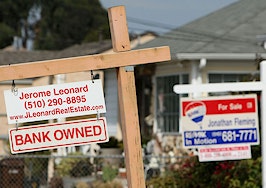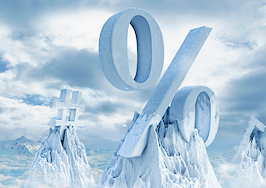With the industry and the market changing faster than ever, make plans to come together with the best community in real estate at our flagship event. Join us at Inman Connect New York, Jan. 24-26, and punch your ticket to the future. Check out these just announced speakers for this must-attend event. Register here.
After a steady yearlong rise, foreclosures are nearly back to pre-pandemic levels.
More than 34,000 properties had foreclosure-related filings in August, up 14 percent from the previous month and more than double the number from the same time last year, according to a new report from Attom.
Meanwhile, nearly 24,000 properties entered the foreclosure process, a mark almost three times higher than the one from August 2021.
The number of new foreclosures remains well below normal levels but has almost caught up to the rates from 2019, before the federal and state governments instituted pandemic-related restrictions on the practice, according to Rick Sharga, Attom’s executive vice president of market intelligence.
“August foreclosure starts were at 86 percent of the number of foreclosure starts in August 2019,” Sharga said in the report, “but it’s important to remember that even then, foreclosure activity was relatively low compared to historical averages.”
For its report, Attom considered property going through the foreclosure process if it had a notice of default, a scheduled auction or was repossessed by the bank.
Some states have seen a particularly pronounced hike in foreclosure activity in recent weeks.
In Oklahoma, the number of properties that entered the foreclosure process jumped 80 percent from July to August. Tennessee saw a 74 percent jump in the same period, while Virginia, Arkansas and Washington state were all up 50 percent or more month over month.
But while foreclosures were ramping up quickly in those five states, they had yet to reach the heights of other places where foreclosures have been even more prevalent.
Illinois leads the nation in foreclosure rates. One in 1,926 housing units there had a foreclosure filing in August — more than twice the national rate.
Delaware was close behind with a one in 2,387 foreclosure rate. South Carolina, New Jersey and Florida rounded out the list of Top 5 states with the highest share of properties with foreclosure filings.
Large cities with notably high foreclosure rates in August include Cleveland; Chicago; Riverside, California; and the Florida cities of Orlando and Jacksonville.
While lenders continued to ramp up their repossession efforts, the intensive and lengthy process has ensured a slower return to “normal” completed foreclosure rates, Attom’s report suggests.
The number of properties repossessed by lenders jumped to just under 4,000 last month, which was 59 percent more than in the same month last year. August marked a particularly fast uptick in repossessions, with a 28 percent increase from July alone.
The historic seller’s market that has only begun to erode in recent months may have also played a part in the below-normal number of bank repossessions, Sharga said in the report.
“Repossessions are likely to continue running below pre-pandemic levels for several reasons,” Sharga said, “most importantly that over 90 percent of borrowers in foreclosure have positive equity in their homes, and would benefit from selling these properties at a profit rather than risk losing everything to a foreclosure auction or lender repossession.”













